Trump Already Bailed On His Latest Promise To Figure Out Health Care, Because Of Course He Did
The long wait for a Republican plan to fix the health care system will continue indefinitely, a status as tedious as it was predictable. President Donald Trump’s most recent empty promises to come up with something better than the Affordable Care Act lasted just a week, which was seven days longer than they deserved to last.
The Republican Party was the become the “Party of Healthcare!” he declared on Twitter last Tuesday. But, like, not until next year, he declared Monday. So we’re right back where we started.
It’s fitting for this presidency that most of Trump’s actions on the issue over that short period took place on Twitter, where he made Washington’s hair stand on end by declaring that Obamacare repeal was back and where he eventually retreated after the pretty much the entire Republican Party begged him to leave this mess alone. Meanwhile, Democrats can’t believe their luck.
Maybe somebody reminded Trump that when he and the GOP tried this in 2017, it was a spectacular, embarrassing failure that energized the Democratic Party and its voters, contributing to Democrats winning control of the House last November. Maybe somebody reminded him that taking away health care from millions of people is very unpopular. Or maybe Trump just remembered that “health care could be so complicated.”
How dumb was this Trumpcare boomlet? So dumb that we were treated to a cameo appearance by Sen. Mitt Romney (R-Utah).
Yes, that Mitt Romney ― the godfather of Obamacare, the man who carried out a health care reform program while he was governor of Massachusetts in the 2000s and later repudiated his own success when he ran for president in 2012 because a guy named Barack Obama liked the idea and decided to extend it to the whole country. Naturally, noted Medicare-fraud-overseer Rick Scott, now a Republican senator from Florida, also stuck his nose in.
Trump’s fake interest in reforming the health care system this time followed the White House’s it-would-be-shocking-if-any-other-president-else-did-it decision last week to side with a bunch of state GOP officials who are trying to use the courts to kill the Affordable Care Act because everything else they’ve attempted hasn’t worked.
One judge has already ruled in favor of this lawsuit ― a lawsuit that, to be generous, is stupid ― and if that decision stands through appeals, it would devastate the health care system.
Love or hate Obamacare, the law is nine years old and has integrated itself into American health care. The millions and millions of people who would lose their health coverage if the Affordable Care Act disappears would be the most direct victims, but the law’s reach goes much further than that.
Related Coverage
Believe Republicans When They Say They're Coming After Your Health Care
The GOP Crusade Against Obamacare Is Shifting To State Capitals
There Is No GOP Obamacare Replacement And There Never Has Been
The Effects Of A Court Ruling Against Obamacare Would Be Much Bigger Than You Think
Perhaps intuiting that if the courts do what he asked them to do and blow up the health care system, voters might blame him and his party, Trump swiftly began making laughable claims that the GOP was this close to solving the Obamacare replacement riddle.
It was never true, not for a second. Like on most issues, Trump has never displayed an understanding of what ails the health care system or how to fix it, nor is he guided by any particular principles beyond self-preservation.
Indeed, self-preservation seems to have been the sole motivation behind Trump’s lame insistence that he alone can fix it.
The notion that the GOP was hard at work on an amazing new health care plan was news to everyone in the GOP when Trump said it last week. What Republicans and everyone else did know is that the Justice Department’s March 25 announcement that it wants the courts to invalidate the entire Affordable Care Act put Republicans in a pickle. If they win in court, they lose in public, because people would be pretty upset.
In classic Trumpian fashion, he simply lied and said the worst wouldn’t happen because he was on top of things. At least some voters might believe this, which would lessen the blow. But this pose couldn’t last, as GOP lawmakers tossed the hot potato back in his direction every time someone asked about it.
The politics here are pretty straightforward: Democrats control the House and will definitely not help Trump dismantle the Affordable Care Act and replace it with something worse, and Senate Republicans have no interest in falling on their faces again for no reason.
But the substance is key, as well.
Democrats have a pretty clear idea of how they want to improve the health care system, and the split within that party is between those who want to government to cover everybody and those who want the government to just cover more people than it does now.
Yet what, exactly, is the Republican ideal for a health care system? The party doesn’t know, and it never has. The plans floated over the past few years all include features that voters don’t like, such as exposing people with pre-existing conditions to discrimination by health insurance companies again and snatching health coverage away from about 20 million people. This is what Trump and the GOP Congress tried two years ago, and they couldn’t even get behind their own plan.
What they could get behind was constantly lying about what their plans would do, a tradition Trump continued this week. In his tweets, he bemoaned Obamacare’s high premiums and big deductibles. And a lot of people who have Affordable Care Act policies (plus many more who have job-based health benefits) do pay a ton for health insurance with deductibles in the thousands of dollars.
What he didn’t acknowledge is that the Republican replacement plans would call for even larger deductibles and that they would make insurance cheaper for some people (the young and healthy) by making it more expensive for everyone else and potentially unattainable for people with pre-existing conditions.
In that light, maybe it’s refreshing that Trump told the truth about one thing this week: There is no Republican health care plan. Let’s check back after the 2020 elections to see if that ever changes. Don’t bet on it.
Also on HuffPost

Trump appears to enjoy the act of signing executive orders and bills more than any of his recent predecessors. While other presidents have also ceremoniously signed documents, Trump regularly holds up his work for photo opportunities.
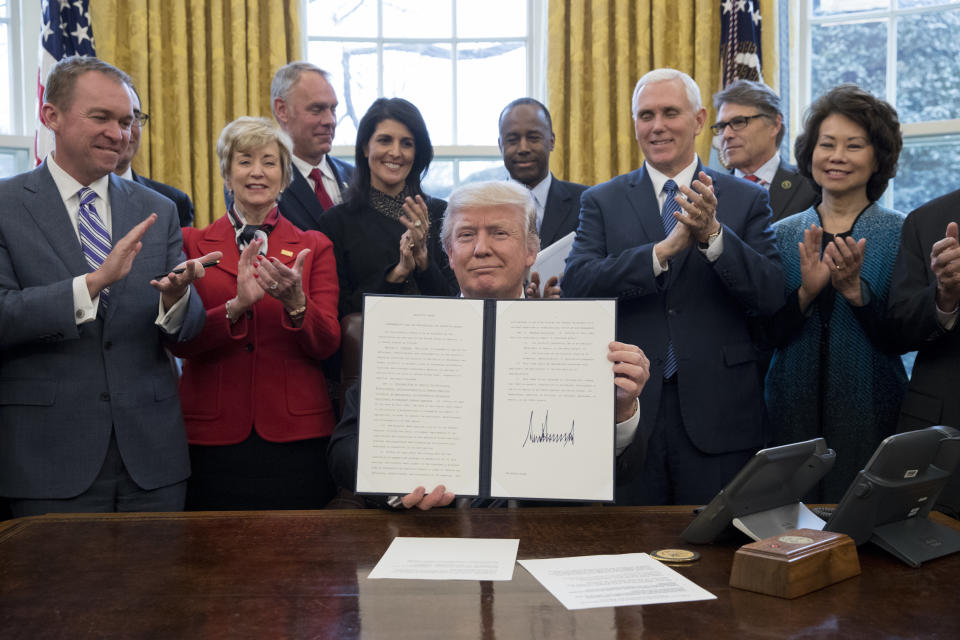
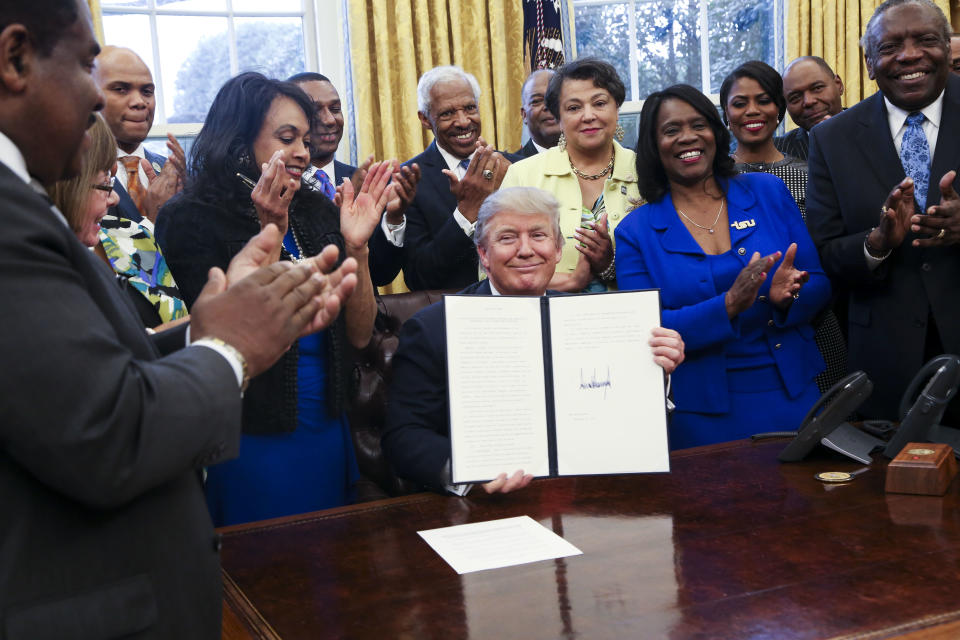
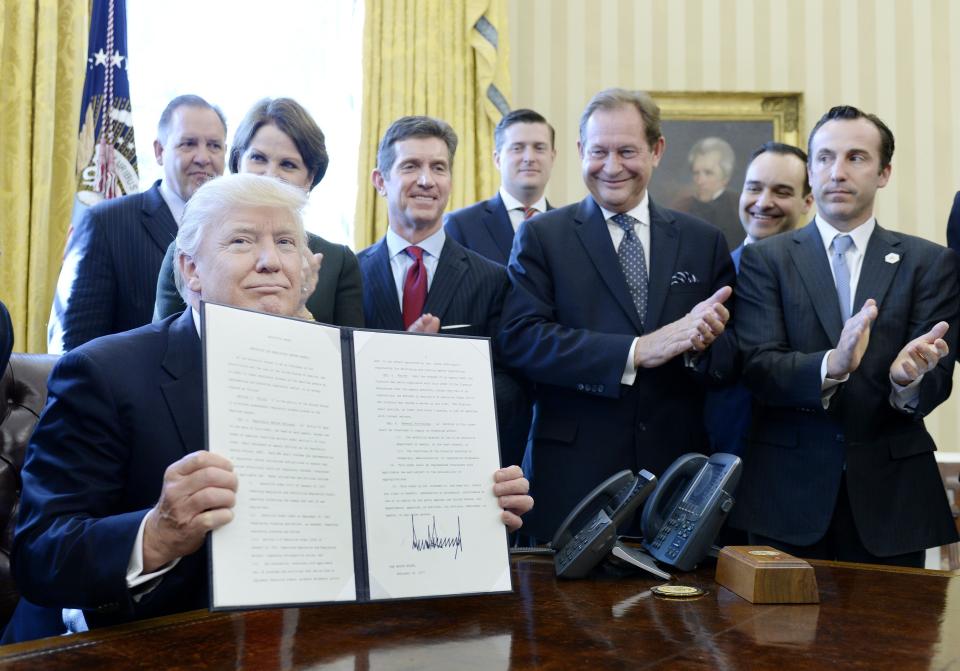
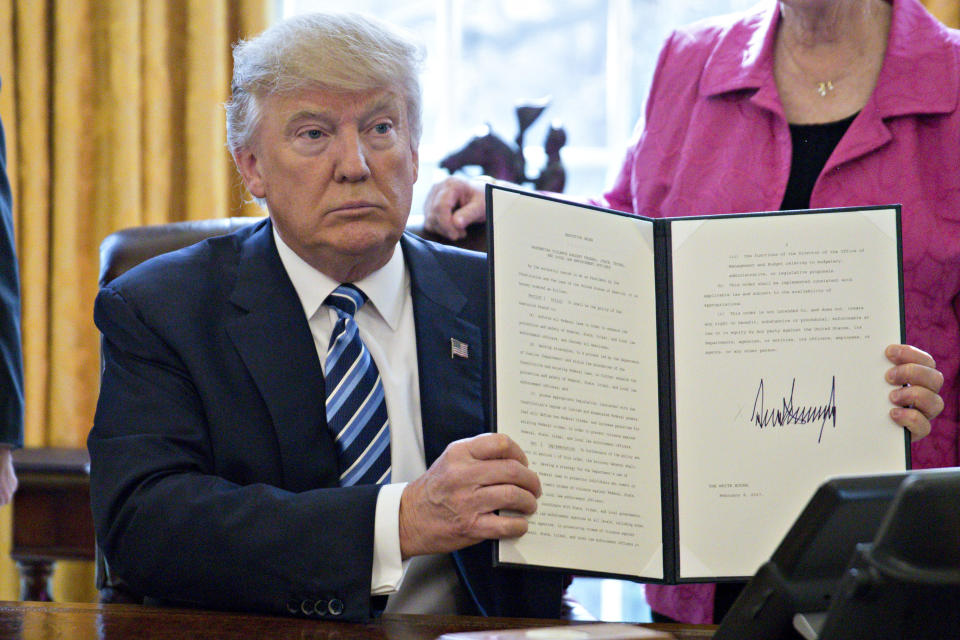
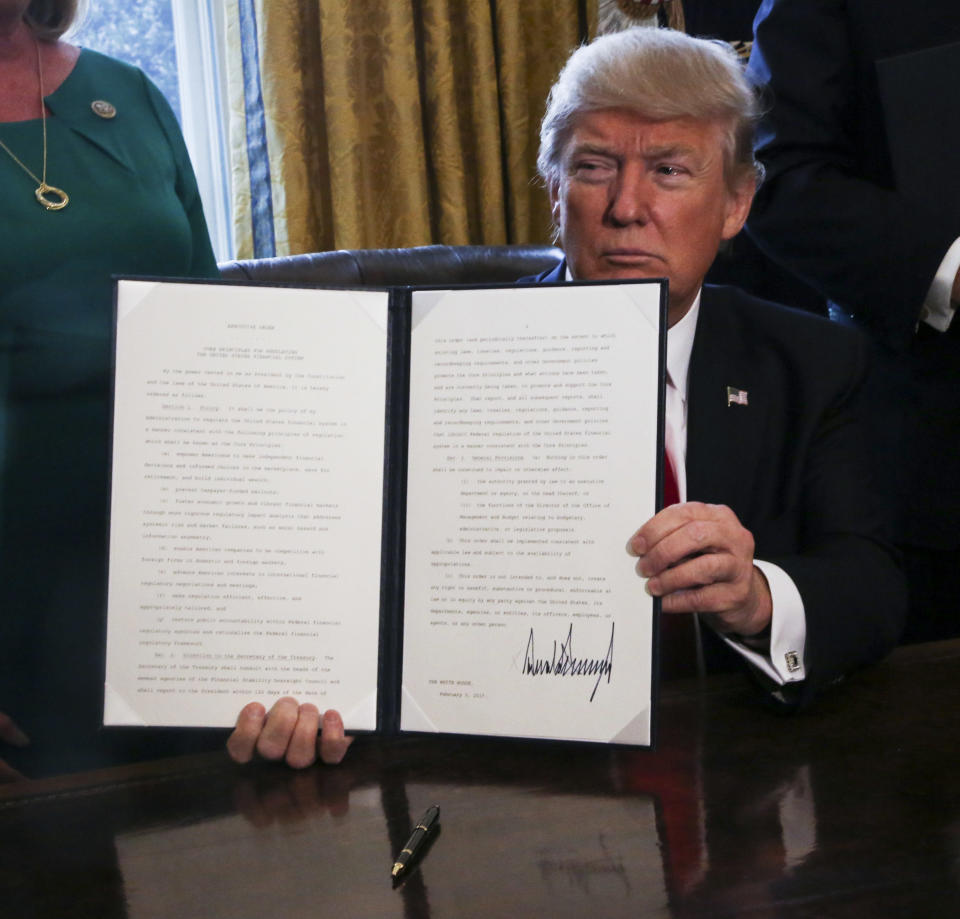
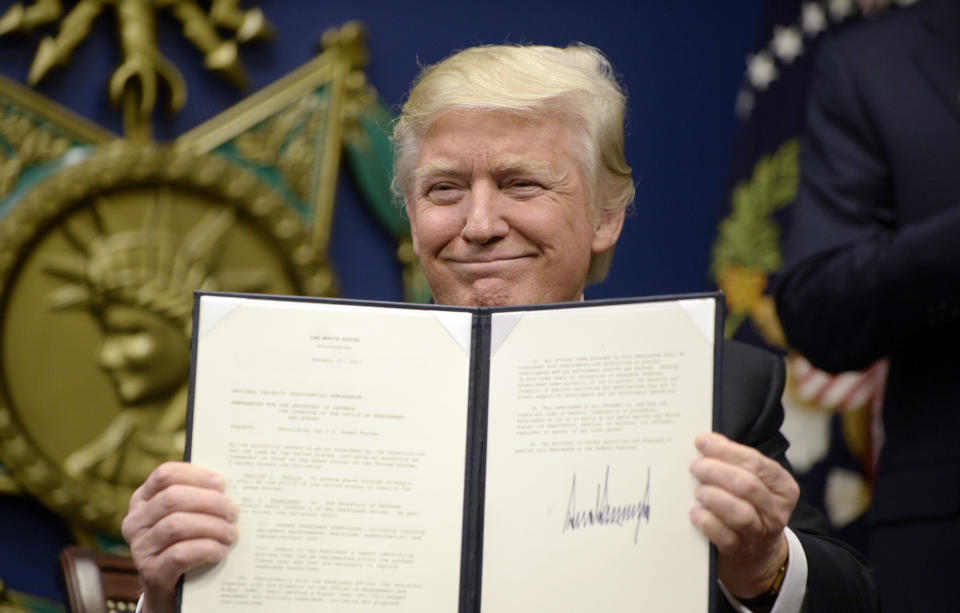
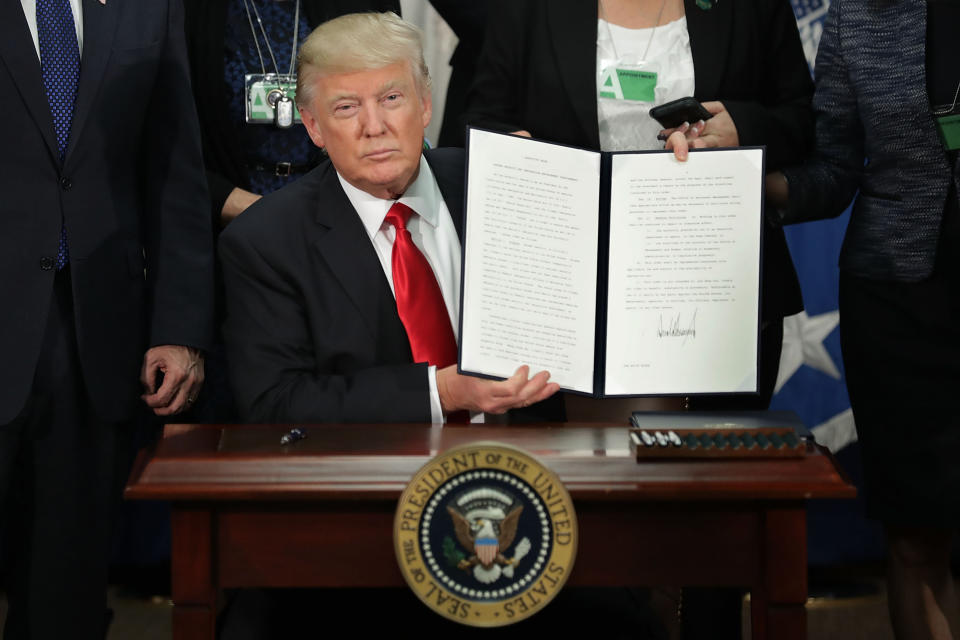
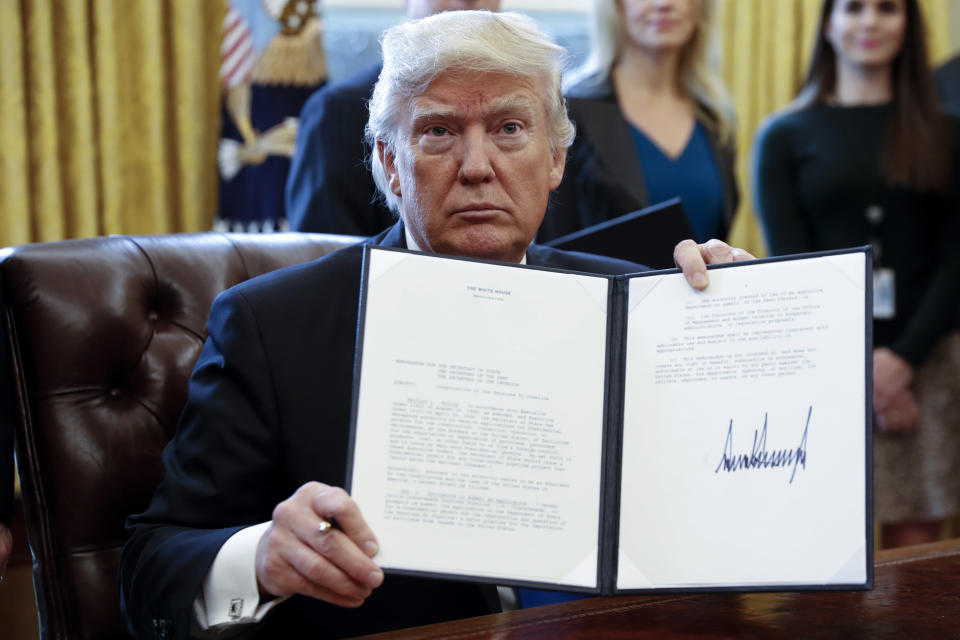
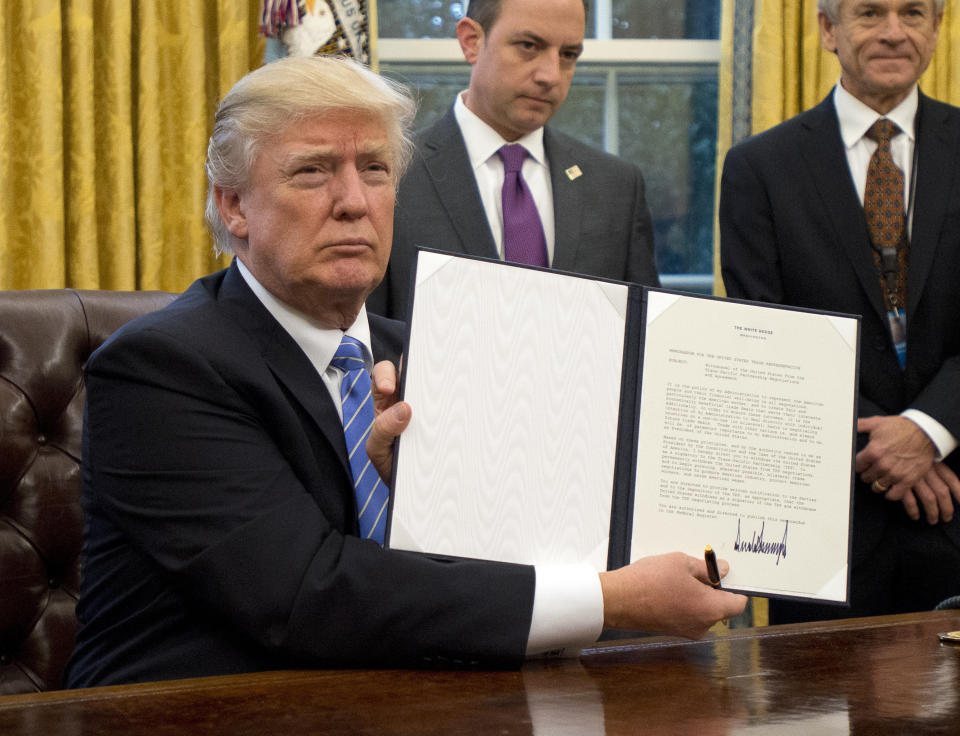
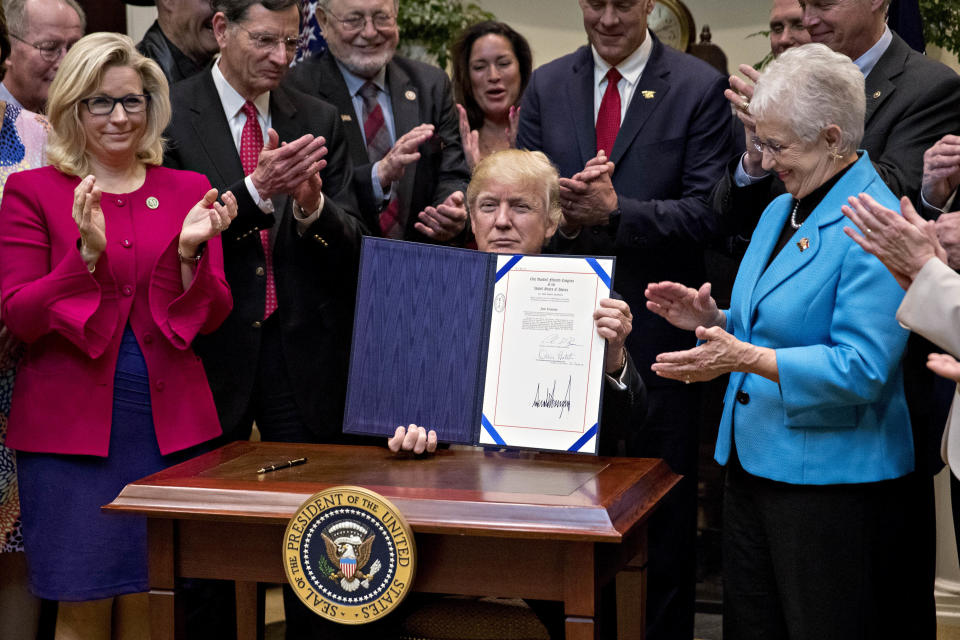
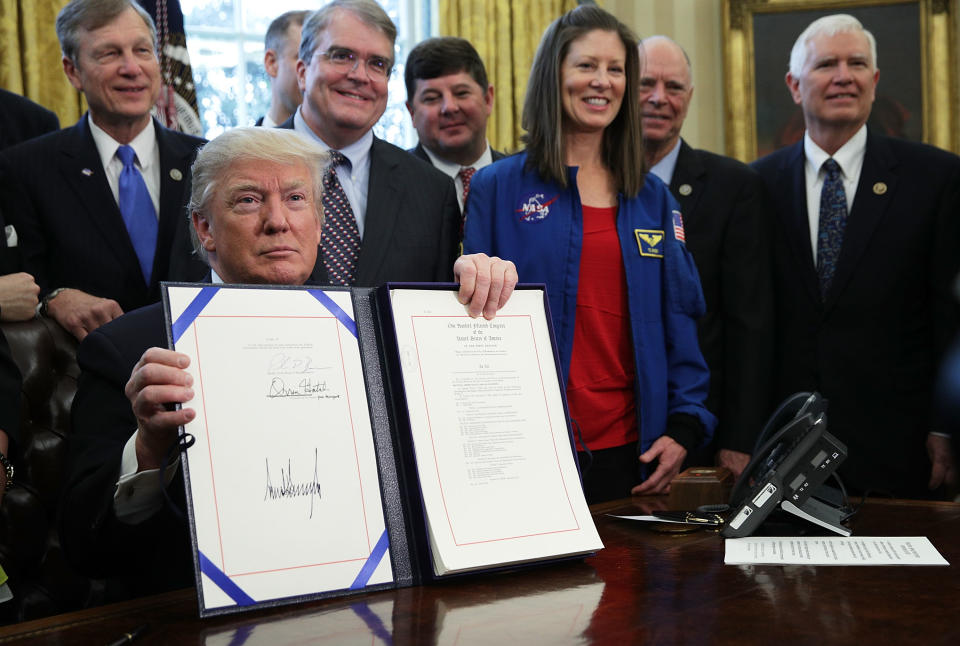
Love HuffPost? Become a founding member of HuffPost Plus today.
This article originally appeared on HuffPost.

